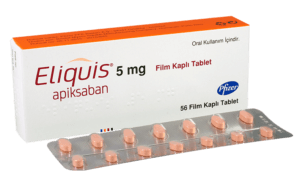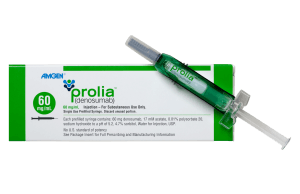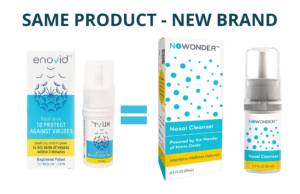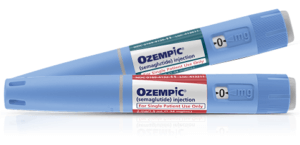
Glaucoma is often called “the silent thief of sight” because it has no warning signs, and any vision lost cannot be restored. People can have lost up to 40% of their vision before they even realize that they are suffering vision loss from glaucoma.
Glaucoma is generally an age-related condition, and the risk increases with age. As more people are living longer, the overall risk of vision loss from glaucoma is increasing. Regular eye exams are the key to protecting vision and catching the disease early. The World Health Organization estimates that 11.9 million people worldwide suffer from moderate to severe vision loss or blindness caused by conditions like glaucoma, diabetic retinopathy, and trachoma, many of which could have been prevented.
How can I help raise awareness about vision loss from glaucoma?
In the United States, about 120,000 individuals have total vision loss from glaucoma. This makes up 9% to 12% of all blindness cases. Raising awareness about glaucoma is important, and there are several ways to help:
- Encourage conversations about glaucoma with family and friends. Those with glaucoma should share their diagnosis with loved ones.
- Share resources like the website glaucoma.org with others who want to learn more.
- Participate in local events, fundraisers, or online discussions to spread awareness in the community.
- Follow the Glaucoma Research Foundation on social media platforms like Facebook, Twitter, or Instagram to stay updated on research and treatments. Share posts to educate others about glaucoma.
Every effort helps support awareness and education about vision loss from glaucoma.
What causes glaucoma?
Glaucoma is an eye condition that slowly causes vision loss, often without any warning signs. While it mostly affects older adults, it can happen to people at any age. This vision loss occurs when the optic nerve is damaged. This nerve works like a cable with millions of tiny wires, sending images from the eyes to the brain.
When something blocks the eye’s drainage system, fluid is prevented from draining properly. This causes pressure to build up in the eye, which can damage the optic nerve. Over time, this damage leads to vision problems like blurry spots, blind spots, glare, and difficulty seeing in low light.
Glaucoma can’t be cured at present, but treatments like medicine or surgery can help by slowing it down or stopping further vision loss. The best treatment depends on the type of glaucoma and other factors. Catching it early is the key to preventing it from getting worse.
Types of Glaucoma
Glaucoma can be divided into two main types. Primary glaucoma usually does not appear to have a clear cause and can develop as open-angle glaucoma or closed-angle glaucoma. Open-angle refers to the angle between the iris and the cornea, through which fluids drain out of the anterior chamber. Even though the angle remains open, the drainage canals slowly become clogged, leading to increased eye pressure and slowly damaging the optic nerve. People often don’t notice any change in their vision until the damage is significant. This condition is lifelong and incurable.
Closed-angle glaucoma occurs when the front of the eye bulges forward suddenly to narrow or completely block the drainage angle formed by the iris and the cornea. In an acute attack, the intraocular pressure can rise quickly, causing severe eye pain, nausea, red eyes, and blurred vision. Closed-angle glaucoma is an emergency that requires immediate attention to prevent blindness.
Secondary glaucoma is caused by something specific, like an injury, or another health condition, or from the side effects of medications. Eye injuries can happen from physical trauma, or after surgery or laser treatments. These injuries can damage the eye or the areas around it, resulting in stretching or scarring of the drainage system. In some cases, blood or small objects can get stuck in the drainage system, making it harder for the eye to drain fluid properly. These can cause too much fluid to build up in the eye. Anyone with an eye injury should have a gonioscopy test to check if the drainage system is working correctly.
Some diseases that affect the whole body can also impact the eyes. Autoimmune conditions, which cause inflammation, may lead to problems in the eye. Such inflammation can block the eye’s drainage system, causing pressure to build up. Steroid medications, often used to treat autoimmune or inflammatory conditions, can also affect the eye’s drainage system, especially if used for more than a few weeks.
Diabetes, high blood pressure, and other heart-related problems don’t directly cause glaucoma. However, if these conditions are uncontrolled, abnormal blood vessels can grow into the eye and block its drainage system. This can cause very high eye pressure, leading to vision loss if not treated quickly. Symptoms to watch for include blurred vision, red eyes, eye pain, and headaches. People with these conditions should have a dilated eye exam yearly to check for any issues.
What is the best way to avoid losing vision from glaucoma?
The best way to avoid losing vision from glaucoma is to treat it as early as possible. This means having complete eye exams regularly, especially when other conditions aggravate the damage. If doctors catch glaucoma early, they can begin treatment immediately.
Who is at risk for glaucoma?
Glaucoma can affect anyone. While it is more common in people over 45, there is a rare type called early-onset glaucoma that can develop in babies and children. Some groups are more likely to develop glaucoma, including:
- African Americans over 40
- People over 60, particularly Mexican-Americans
- Those with a family history of the disease
How is glaucoma detected?
Glaucoma testing may involve several quick, painless, and noninvasive tests that help eye doctors detect and monitor the disease. An angle exam checks where the cornea and iris meet to see if the eye’s drainage system is open or blocked. Corneal thickness measurement determines your risk for glaucoma, while a dilated eye exam allows the doctor to examine the retina and optic nerve for damage. An eye pressure check measures pressure inside the eye, a key sign of glaucoma. Optic nerve imaging captures detailed pictures of the retina and optic nerve to assess any changes. Lastly, a visual field test checks for vision loss in certain areas and tracks how glaucoma is progressing. Together, these tests help doctors identify the condition early and decide on the best way to treat glaucoma.
Don’t wait for symptoms. Many people don’t realize they have glaucoma because it often has no early warning signs. If left untreated, glaucoma can slowly cause a person to lose their side vision. Eventually, it can also affect their central vision.
How to treat glaucoma
The best way to treat glaucoma is by lowering eye pressure. Some medications do this by reducing the amount of fluid the eye produces, while others help the fluid drain out to lower the pressure. Treatment varies between individuals, so it is important for patients to consult an ophthalmologist to determine the best approach.
Eye drops
Open-angle glaucoma is often treated with eye drops. Examples are Vyzula, Trusopt, Lumigan, Combigan, and Simbrinza, which work to lower pressure in the eye.
Eye drops lower eye pressure to treat glaucoma in two ways:
- They reduce the amount of fluid made inside the eye or
- They help the fluid drain out more easily.
The only current treatment for closed-angle glaucoma is surgery.
Because glaucoma doesn’t always cause noticeable symptoms, some people might forget to use their eye drops or stop taking them altogether. However, sticking to the treatment plan and attending regular check-ups with an eye doctor is essential.
Oral medications
Diamox is an oral medication, usually taken in tablet form, that helps lower eye pressure and treat glaucoma. It is commonly used in emergency situations when eye drops are not enough to bring down high pressure inside the eye. This medication is typically a short-term solution to control very high eye pressure before more permanent treatments, like laser procedures or glaucoma surgery, can be done.
Laser
Lasers are commonly used to treat glaucoma to help reduce eye pressure by improving the flow and drainage of fluid within the eye. These precise beams of concentrated light target specific parts of the eye without damaging nearby tissues. One common procedure, called Selective Laser Trabeculoplasty (SLT), uses low-energy pulses to enhance fluid drainage and lower pressure. SLT is often recommended for patients whose eye pressure isn’t well controlled with medication, for those experiencing side effects from drops, or as an initial treatment option. While SLT doesn’t improve vision, it can effectively lower eye pressure by about 25% in most patients and lasts an average of three to four years.
MIGS
Minimally invasive glaucoma surgery (MIGS) is a newer treatment option that is transforming the way glaucoma is managed. The procedure involves tiny incisions to place microscopic devices inside the eye, aiming to reduce eye pressure and potentially lessen the need for glaucoma eye drops or more invasive surgeries. Unlike traditional surgeries, MIGS typically avoids disturbing the conjunctiva, the thin membrane covering the eye, which helps preserve the success rate of future glaucoma filtration surgeries if needed.
Trabeculectomy
Trabeculectomy is a surgery used to treat glaucoma by lowering eye pressure (IOP). It works by creating a small opening in the eye’s sclera (the white part) to let fluid drain into a space under the eye’s surface (the conjunctiva), forming a “drainage bleb.” This reduces pressure inside the eye. Trabeculectomy has been a trusted treatment for severe glaucoma for over 40 years.
Glaucoma Drainage Devices
Glaucoma Drainage Devices (GDDs) are implants used to treat severe glaucoma when other treatments haven’t worked. These devices help drain excess fluid from the eye to reduce pressure. A GDD consists of a small tube that allows fluid to flow from the front of the eye to a filtering area called a bleb, supported by a plate under the eye’s white tissue. The plate keeps the bleb open, ensuring proper drainage. The tube is covered by a patch for protection and is not noticeable or uncomfortable. GDDs are typically used for difficult-to-control cases of glaucoma.
FAQs
Do eyes look different with glaucoma?
In most cases, glaucoma does not cause any noticeable changes to the appearance of the eyes. However, in severe cases where a GDD is used, there may be a small patch or bump under the white tissue of the eye where the device is implanted. This typically does not affect vision or cause discomfort.
What activities make glaucoma worse?
There are no specific activities known to worsen glaucoma, but certain risk factors can increase the likelihood of developing the condition. These include having a family history of glaucoma, being over the age of 60, and having medical conditions such as diabetes or high blood pressure.
Can I still drive if I have glaucoma?
Individuals diagnosed with glaucoma should notify their local driver licensing authority, as specific guidelines or regulations may apply to driving with the condition. Generally, if glaucoma is well-managed and vision is not affected, it is possible to drive safely. However, if vision becomes significantly impaired due to glaucoma, limiting or ceasing driving may be necessary.
Is glaucoma a lifestyle disease?
Glaucoma is not typically considered a lifestyle disease, but certain lifestyle factors can contribute to its development. For instance, smoking has been associated with an increased risk of glaucoma, and quitting smoking may help reduce the chances of developing the condition.
















